Teaching conflict resolution skills for kids is of utmost importance in today’s society. Conflict is an inevitable part of human interaction, and learning how to effectively manage and resolve conflicts at an early age sets the foundation for healthier relationships and a more harmonious future.
By equipping children with the necessary skills to navigate conflicts, we empower them to develop empathy, communication, and problem-solving abilities that can positively impact their personal, academic, and professional lives. Positive parenting involves teaching conflict resolution skills for kids in a supportive and constructive manner. By using positive reinforcement and open communication, parents can empower their children to understand and manage conflicts effectively, encouraging empathy, active listening, and finding mutually beneficial solutions.
In this era of global connectivity, conflicts arise not only in face-to-face interactions but also in virtual spaces. With the widespread use of social media and online platforms, children are exposed to various forms of conflict on a daily basis.
Whether it’s a disagreement with a friend, a sibling rivalry, or a clash of opinions online, the ability to handle these situations in a constructive manner becomes crucial for their emotional well-being and social development.
They learn to appreciate different perspectives, challenge biases, and find common ground. Such abilities lay the groundwork for building stronger communities and reducing the prevalence of bullying, discrimination, and violence.
They develop the confidence to express their needs and desires while considering the interests of others, leading to healthier relationships, improved teamwork, and enhanced problem-solving abilities.
Table of contents
- Understanding Conflict
- Essential Conflict Resolution Skills
- Teaching Conflict Resolution at Different Ages
- Strategies for Practicing Conflict Resolution
- Addressing Common Challenges
- Teaching Empathy and Perspective-Taking
- Creating a Conflict-Positive Home
- Recognizing Progress and Celebrating Success
- Conclusion
- Frequently Asked Questions
Understanding Conflict
What is Conflict?
At its core, conflict refers to a disagreement or clash between individuals or groups due to incompatible interests, needs, values, or goals. It arises when different perspectives, desires, or objectives come into direct opposition.
Conflict is not inherently negative; it can serve as a catalyst for growth, change, and resolution when managed constructively. However, if left unaddressed or mismanaged, conflicts can escalate, leading to negative consequences and strained relationships.
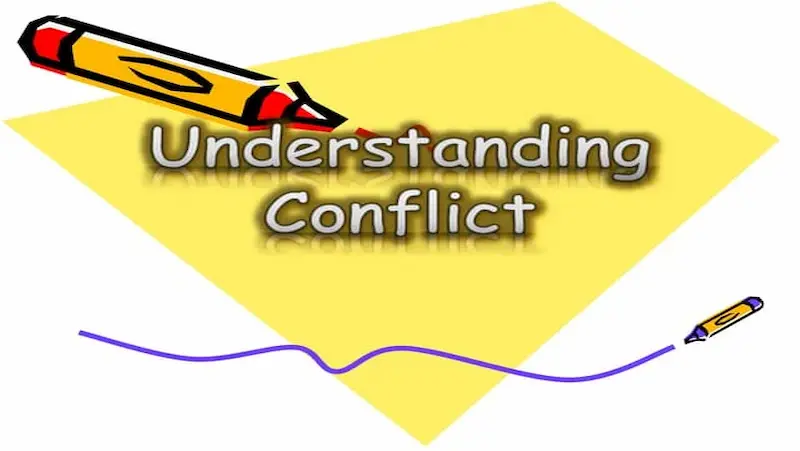
Common Causes of Conflict:
Miscommunication: Communication breakdowns, misunderstandings, or misinterpretations can create fertile ground for conflict. Differences in verbal and nonverbal cues, language barriers, or ineffective listening can exacerbate conflicts.
Competition: Competition for limited resources, such as money, power, or recognition, often gives rise to conflicts. When individuals or groups perceive that their interests are threatened or compromised, it can trigger disputes.
Differences in Values and Beliefs: Diverse backgrounds, cultures, and belief systems can lead to conflicting perspectives and opinions. Disagreements on moral, ethical, or ideological grounds can ignite intense conflicts.
Scarce Resources: When resources like land, water, or job opportunities are scarce, conflicts may arise as individuals or groups vie for a share. Unequal distribution or perceived inequities in resource allocation can breed tension.
Power Struggles: Hierarchies and power imbalances can contribute to conflicts. When one party seeks to dominate, control, or exert authority over another, it can lead to opposition and resistance.
Teaching critical thinking skills for kids equips them with the ability to analyze situations, understand different perspectives, and find logical solutions, which can contribute to resolving conflicts effectively.
Types of Conflicts Children May Encounter:
Sibling Rivalry: Sibling relationships are fertile ground for conflicts. Siblings may compete for attention, affection, or parental resources. Differences in personalities, ages, or interests can exacerbate these conflicts. Parental guidance and mediation are crucial in helping children develop healthy sibling relationships.
Playground Disputes: Children often experience conflicts on the playground. Disagreements over sharing toys, taking turns, or interpreting rules can lead to disputes. Teaching conflict resolution skills for kids and promoting empathy can empower children to resolve conflicts amicably.
Friendship Conflicts: Children may encounter conflicts with their friends, often stemming from misunderstandings, jealousy, or differences in interests. Learning effective communication and negotiation skills can help children maintain and repair friendships.
Classroom Conflicts: Differences in opinions, competition for attention, or perceived favoritism from teachers can trigger conflicts in the classroom. Encouraging a supportive and inclusive learning environment can reduce such conflicts and foster cooperation.
Family Conflicts: Within the family unit, conflicts can arise due to diverse needs, values, and expectations. Disputes over chores, rules, or personal boundaries are common. Encouraging open communication, active listening, and empathy can help resolve family conflicts.
The Role of Parents
Parenting is a lifelong journey filled with joy, challenges, and responsibilities. One of the crucial roles parents play in guiding their children in acquiring important life skills. Among these skills, conflict resolution stands out as a vital ability that equips children with the tools to navigate interpersonal challenges in a healthy and productive manner.
In this blog post, we will explore the significant role parents have in teaching conflict resolution to their children, and how their influence can shape their child’s future relationships and overall well-being.
Lead by Example
Children are highly observant and tend to emulate the behavior of their parents. Consequently, parents become powerful role models when it comes to conflict resolution.
By demonstrating effective communication, active listening, and respectful problem-solving, parents can establish a positive foundation for their children to learn from. Engaging in healthy discussions and modeling empathy and compromise helps children develop crucial skills to manage conflicts constructively.
Encouraging Open Communication
Effective conflict resolution starts with open and honest communication. Parents can create an environment that fosters open dialogue by encouraging their children to express their thoughts and emotions. By actively listening to their children without judgment, parents create a safe space where conflicts can be addressed and resolved.
This practice enables children to develop strong communication skills and empowers them to express themselves clearly and assertively when faced with conflicts outside of the family unit.
Teaching Problem-Solving Strategies
Conflict resolution often requires problem-solving skills to reach mutually beneficial solutions. Parents can teach their children various problem-solving strategies that promote understanding and compromise. For example, they can guide their children through brainstorming sessions, where everyone contributes ideas and alternative solutions.
By involving children in decision-making processes and encouraging them to consider multiple perspectives, parents nurture their child’s ability to think critically and find creative solutions to conflicts.
Emphasizing Empathy and Understanding
Empathy is a fundamental aspect of conflict resolution. Parents can instill empathy in their children by encouraging them to understand and acknowledge the feelings and perspectives of others.
By teaching their children to put themselves in someone else’s shoes, parents foster compassion and understanding, which are essential for resolving conflicts peacefully. Practicing empathy helps children develop stronger emotional intelligence, fostering healthier relationships and interpersonal connections throughout their lives.
Setting Boundaries and Teaching Respect
In conflict resolution, setting boundaries and teaching respect are essential components. Parents play a vital role in teaching their children the importance of respecting others’ boundaries and expressing their own needs in a respectful manner.
By modeling respectful behavior and addressing conflicts assertively yet respectfully, parents provide their children with a valuable lesson in maintaining healthy boundaries and cultivating respectful relationships.
Providing Guidance and Support
Conflict resolution can be challenging, particularly for children who are still developing their emotional and social skills. Parents can offer guidance and support by being present and available when conflicts arise.
Offering a listening ear, providing guidance on conflict resolution strategies, and helping children reflect on their own role in conflicts all contribute to their growth and development in this area. By being supportive, parents instill confidence in their children and encourage them to actively engage in resolving conflicts rather than avoiding or escalating them.
Essential Conflict Resolution Skills
Conflict is an inevitable part of human interaction, and children are no exception. As they navigate the complexities of growing up, learning how to resolve conflicts in a constructive manner becomes crucial for their emotional and social development.
By equipping children with essential conflict resolution skills for kids, we empower them to build healthy relationships, enhance their communication abilities, and foster a harmonious environment. In this blog, we will explore four fundamental conflict resolution skills for kids that can profoundly impact children’s lives: active listening, effective communication, problem-solving, and emotional regulation.

Active Listening: Teaching children to listen attentively and empathetically:
Active listening lays the foundation for effective conflict resolution. Encouraging children to practice active listening helps them develop empathy, understanding, and respect for others’ perspectives. Teach children to focus on the speaker, maintain eye contact, and provide verbal and non-verbal cues to demonstrate their engagement.
Encourage them to ask questions and paraphrase to ensure they comprehend the speaker’s message accurately. By fostering active listening skills, children learn to value open communication and establish a solid groundwork for resolving conflicts amicably.
Effective Communication: Helping children express their feelings and needs clearly:
Effective communication is essential for expressing one’s thoughts, feelings, and needs without resorting to aggression or hostility. Children need guidance in articulating their emotions in a constructive manner.
Encourage them to use “I” statements to express their feelings, such as “I feel upset when…” or “I need help with…” This approach fosters assertiveness while avoiding blaming or accusing others. By empowering children with effective communication skills, they can confidently express themselves, fostering understanding and reducing potential conflicts.
Effective communication is a fundamental aspect of developing leadership skills for kids. By teaching them to express themselves clearly, actively listen to others, and convey their ideas with confidence, children can become influential leaders who inspire and collaborate with their peers effectively.
Problem-solving: Introducing strategies for finding mutually beneficial solutions:
Conflict resolution often requires finding mutually beneficial solutions that address the needs of all parties involved. Teaching children problem-solving skills equips them with the ability to collaborate, brainstorm solutions, and negotiate compromises.
Encourage children to identify the underlying issues, break them down into manageable parts, and brainstorm potential solutions together. Emphasize the importance of considering others’ perspectives and finding win-win outcomes. By nurturing problem-solving skills, children gain confidence in their ability to navigate conflicts effectively and create positive resolutions.
Emotional Regulation: Techniques to manage and control emotions during conflicts:
Conflicts can evoke strong emotions, making it challenging for children to respond calmly and rationally. Emotional regulation skills enable children to manage their emotions, preventing conflicts from escalating into destructive situations. Teach children relaxation techniques like deep breathing, counting to ten, or taking a short break to regain composure.
Encourage them to express their emotions appropriately by using words or engaging in activities like drawing or journaling. By helping children develop emotional regulation skills, they can handle conflicts in a calm and composed manner, fostering healthier relationships and better conflict outcomes. learn about budgeting for kids also.
Teaching Conflict Resolution at Different Ages
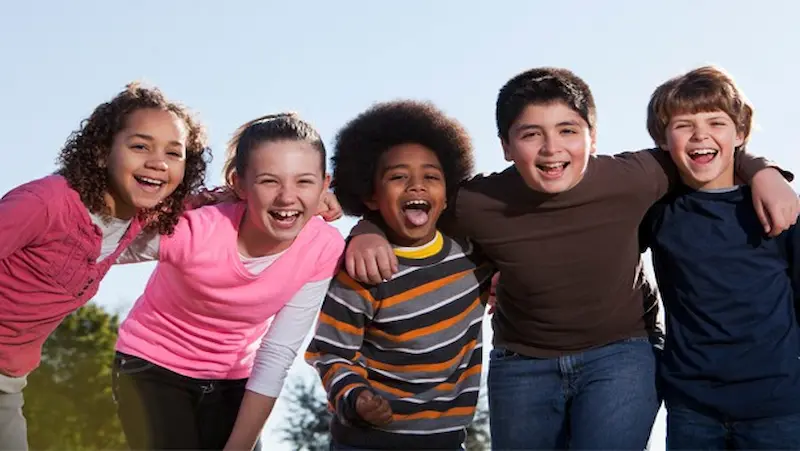
Conflict Resolution for Preschoolers (Ages 3-5)
Preschoolers are at a stage of rapid cognitive and emotional development. They are learning to express their needs and emotions, but they often lack the language and self-regulation skills necessary for resolving conflicts independently. Here are some age-appropriate techniques for teaching conflict resolution to preschoolers:
Teach emotional literacy: Help preschoolers identify and label their emotions. Encourage them to use simple feeling words to express how they feel during conflicts, such as “I’m mad” or “I’m sad.”
Model problem-solving: Demonstrate how conflicts can be resolved peacefully by using puppets, dolls, or role-play scenarios. Show them how to take turns, share, and find win-win solutions.
Encourage empathy: Help preschoolers understand others’ perspectives by asking questions like “How do you think your friend feels?” Encourage them to imagine how their actions might impact others.
Teach basic negotiation skills: Teach preschoolers how to use words instead of physical aggression. Encourage them to take turns and share toys, fostering a sense of fairness and cooperation.
Conflict Resolution for Elementary-Aged Children (Ages 6-11)
Elementary-aged children are more capable of understanding and engaging in complex conflict resolution processes. They are developing their communication skills and problem-solving abilities. Here are some techniques to teach conflict resolution to this age group:
Active listening: Teach children to listen attentively to others during conflicts. Encourage them to paraphrase and repeat what the other person said to ensure understanding.
“I” statements: Help children express their feelings and needs using “I” statements, such as “I feel frustrated when…” or “I need help with…”. This approach promotes assertiveness and avoids blaming others.
Brainstorming solutions: Teach children how to generate multiple solutions to a conflict. Encourage them to evaluate the pros and cons of each option and work towards a mutually acceptable solution.
Mediation and compromise: Introduce the concept of mediation, where a neutral person helps facilitate the resolution process. Teach children the importance of compromise and finding a middle ground.
Conflict Resolution for Teenagers (Ages 12-18)
Teenagers face unique challenges in conflict resolution as they deal with changing identities, peer pressure, and increased independence. Here are some techniques to teach conflict resolution to teenagers:
Teach emotional regulation: Help teenagers understand their emotional triggers and develop strategies to manage anger, frustration, and stress. Encourage them to take a break when conflicts escalate.
Active communication: Emphasize the importance of clear and respectful communication. Encourage teenagers to listen actively, express their thoughts and feelings honestly, and use nonviolent language.
Problem-solving and negotiation: Teach teenagers structured problem-solving techniques, such as identifying the issue, brainstorming solutions, evaluating alternatives, and selecting the best option. Encourage them to negotiate and find win-win solutions.
Encourage empathy and perspective-taking: Help teenagers develop empathy by encouraging them to consider others’ experiences and emotions. Encourage them to put themselves in others’ shoes to foster understanding and compassion.
Strategies for Practicing Conflict Resolution
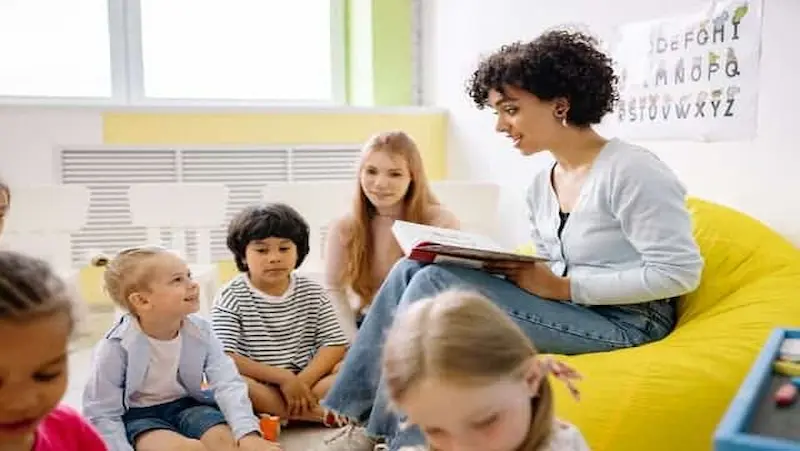
Role-playing scenarios to simulate conflicts and resolutions
Role-playing is a powerful tool for simulating conflicts and resolutions in a controlled environment. By assigning participants different roles and scenarios, they can step into the shoes of those involved in the conflict, gaining empathy and perspective. Here’s how to incorporate role-playing into conflict-resolution training:
a) Create realistic scenarios: Develop a range of scenarios based on common conflict situations that participants may encounter in their personal or professional lives. These scenarios should involve varying degrees of intensity, allowing participants to practice conflict resolution skills for kids at different levels.
b) Assign roles and objectives: Divide participants into pairs or small groups, assigning each person a specific role within the conflict scenario. Ensure that each role has clear objectives, representing different perspectives and interests involved in the conflict.
c) Facilitate discussions and feedback: After the role-play, encourage participants to discuss their experiences, challenges, and strategies employed. Facilitate a debriefing session to explore alternative approaches and solutions, fostering a collaborative environment for learning and growth.
d) Reflect on emotions and communication styles: Pay attention to participants’ emotional reactions during role-playing and discuss how those emotions influenced their communication. Encourage self-reflection on their own communication styles and the impact they have on conflict resolution.
Encouraging cooperation through team-building activities and games
Team-building activities and games provide a lighthearted and enjoyable way to enhance cooperation and conflict-resolution skills. These activities help build trust, improve communication, and foster a sense of unity among participants. Consider the following strategies when incorporating team-building activities:
a) Problem-solving challenges: Engage participants in problem-solving activities that require collaboration and effective communication. For example, puzzles, escape rooms, or building projects can encourage teams to work together, find common ground, and overcome challenges collectively.
b) Trust-building exercises: Trust is essential for successful conflict resolution. Encourage activities that promote trust-building, such as blindfolded trust walks or trust falls. These exercises help individuals develop faith in their teammates and enhance their ability to resolve conflicts together.
c) Communication games: Games that emphasize effective communication can improve conflict resolution skills for kids. For instance, the “Telephone” game can demonstrate how messages can be misinterpreted, highlighting the importance of clear and concise communication.
d) Reflective discussions: After each team-building activity or game, facilitate reflective discussions. Encourage participants to share their observations, challenges faced, and strategies used to resolve conflicts during the activity. This reflection allows participants to apply the lessons learned to real-life situations.
Addressing Common Challenges

Dealing with Power Struggles and Strong Emotions during Conflicts:
Cultivate Emotional Awareness: Both parties involved in a power struggle or conflict may experience strong emotions. It’s crucial to encourage emotional awareness, helping children recognize and express their feelings in a healthy way. Teach them to use “I” statements to express their needs and concerns, fostering effective communication and empathy.
Model Healthy Conflict Resolution: Children learn by observing their caregivers. As adults, it is essential to model healthy conflict resolution by remaining calm, respectful, and assertive. Show them how conflicts can be resolved through active listening, compromise, and finding win-win solutions.
Foster Empathy and Perspective-Taking: Encourage children to put themselves in others’ shoes to understand their feelings and viewpoints. Empathy helps in defusing power struggles and developing a deeper understanding of one another. Teach them to actively listen and validate each other’s emotions.
Teaching stress management for kids involves establishing non-negotiable rules for self-care and relaxation, empowering them to recognize their boundaries, prioritize their well-being, and effectively cope with stressors, leading to improved emotional resilience and overall mental health.
Teach Problem-Solving Skills: Empower children by teaching them problem-solving skills. Encourage them to brainstorm and generate multiple solutions to conflicts. This process helps them understand that conflicts can be resolved through collaboration and compromise.
Check out emotional regulation activities for kids.
Handling Conflicts Among Siblings and Multiple Children:
Set Clear Expectations and Rules: Establish clear expectations and rules regarding behavior and conflict resolution within the family. Ensure that everyone understands these guidelines and the consequences of breaking them. Consistency is key to creating a fair and harmonious environment.
Promote Individuality and Fairness: Recognize and appreciate each child’s unique qualities and talents. Encourage siblings to support and celebrate each other’s successes. Promote fairness by allocating responsibilities and privileges equitably, avoiding favoritism.
Encourage Open Communication: Create an open and safe space for siblings to express their feelings and concerns. Encourage them to use “I” statements and actively listen to each other. Establish regular family meetings or check-ins to address any ongoing issues or conflicts.
Foster Cooperation and Collaboration: Encourage activities that require siblings to work together towards a common goal. This can include projects, games, or household chores. Collaboration helps build teamwork skills and strengthens sibling bonds.
Teach Conflict Resolution Skills: Provide siblings with tools for resolving conflicts effectively. Teach them negotiation skills, compromise, and the importance of finding mutually beneficial solutions. Mediation can be helpful in facilitating discussions and promoting understanding.
Teaching Empathy and Perspective-Taking
In a world that often feels divided and disconnected, cultivating empathy and perspective-taking has become more crucial than ever. Empathy allows us to understand and share the feelings of others, while perspective-taking enables us to step outside our own experiences and view the world through different lenses.
These skills are not innate; they must be taught and nurtured. By actively promoting empathy development, we can foster a more compassionate and understanding society. In this blog post, we will explore the importance of teaching empathy and perspective-taking and provide practical activities and exercises to support this process.
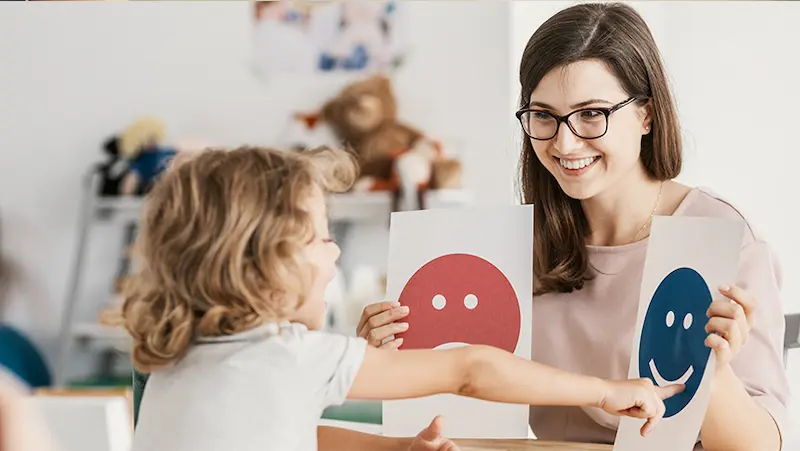
The Importance of Empathy and Perspective-Taking
Empathy is the foundation of human connection. It allows us to form meaningful relationships, enhance communication, and build bridges between diverse groups. By understanding and acknowledging the emotions and perspectives of others, we can foster inclusivity, reduce conflict, and promote cooperation.
Furthermore, perspective-taking expands our worldview and challenges our biases. It enables us to appreciate the complexity of human experiences, encouraging us to approach situations with open-mindedness and compassion. Incorporating perspective-taking into anger management activities for kids allows them to see situations from different viewpoints, promoting empathy and understanding. By encouraging them to consider others’ feelings and perspectives, children can develop better emotional control and communication skills, leading to more constructive ways of expressing and managing their anger. By teaching empathy and perspective-taking, we equip individuals with the tools to navigate interpersonal relationships, engage in respectful dialogue, and contribute positively to their communities.
Activities and Exercises to Promote Empathy Development
Storytelling and Role-Playing: Encourage individuals to share personal stories or create fictional narratives that explore different perspectives. This activity allows participants to step into someone else’s shoes and gain a deeper understanding of their emotions and experiences.
Empathy Circles: Create a safe and inclusive space where individuals can openly share their feelings and thoughts. This activity promotes active listening and empathetic responses, fostering a sense of compassion and support within the group.
Human Library: Organize an event where individuals with diverse backgrounds and experiences become “books.” Participants can “check out” these “books” and engage in one-on-one conversations, fostering empathy through direct interaction and learning from real-life stories.
Cross-Cultural Immersion: Encourage individuals to explore different cultures through immersive experiences, such as attending cultural festivals, visiting museums, or engaging in language exchange programs. Experiencing different customs and traditions firsthand can broaden perspectives and enhance empathy.
Perspective-Sharing Discussions: Facilitate group discussions where participants explore controversial topics from multiple perspectives. Encourage respectful dialogue, active listening, and the ability to consider alternative viewpoints without judgment.
Media Analysis: Analyze books, movies, or news articles that present diverse perspectives or address social issues. Encourage participants to critically examine the experiences and emotions depicted, fostering empathy through media literacy.
Random Acts of Kindness: Encourage individuals to perform small acts of kindness for strangers or members of their community. This activity promotes empathy by allowing individuals to actively consider the needs and feelings of others.
Volunteer and Community Service: Engage individuals in volunteer activities that expose them to different communities and social issues. Working directly with marginalized groups or contributing to initiatives addressing societal challenges can deepen empathy and inspire action.
Creating a Conflict-Positive Home

Establishing Family Values and Rules Around Conflict Resolution
To create a conflict-positive home, it is crucial to establish clear family values and rules that guide how conflicts are handled and resolved. Here are some steps to help you lay the foundation:
a) Identify and articulate family values: Begin by identifying and discussing the core values that are important to your family. These values can serve as a guiding compass during conflicts, ensuring that all family members are on the same page regarding what is deemed acceptable behavior.
b) Foster respect and empathy: Emphasize the importance of respect and empathy in resolving conflicts. Teach family members to listen actively, acknowledge each other’s perspectives, and avoid personal attacks. Encourage the use of “I” statements to express feelings and avoid blaming others.
c) Establish non-negotiable rules: Create a set of non-negotiable rules that promote healthy conflict resolution. For example, no physical aggression, no shouting or yelling, and no name-calling. These rules will help maintain a safe and respectful environment for everyone involved.
Also, Teaching stress management for kids involves establishing non-negotiable rules for self-care and relaxation, empowering them to recognize their boundaries, prioritize their well-being, and effectively cope with stressors, leading to improved emotional resilience and overall mental health.
d) Set consequences and rewards: Clearly define the consequences for breaking the established rules and ensure that they are consistently enforced. Additionally, reward positive behavior and effective conflict resolution skills for kids to reinforce the importance of peaceful resolution.
Encouraging Open Communication and Active Problem-Solving
Once the foundation of family values and conflict resolution rules is established, the next step is to encourage open communication and active problem-solving. Here are some strategies to promote these practices:
a) Create a safe space for expression: Ensure that all family members feel safe and comfortable expressing their thoughts and emotions. Encourage active listening and make it clear that everyone’s opinions and perspectives are valued.
b) Practice regular family meetings: Schedule regular family meetings to discuss any issues or concerns openly. These meetings can provide a platform for family members to voice their thoughts, brainstorm solutions, and work together on war resolution.
c) Teach negotiation and compromise skills: Conflict resolution often involves finding a middle ground through negotiation and compromise. Help family members develop these skills by providing examples, role-playing scenarios, and guiding them in brainstorming solutions that satisfy everyone’s needs.
d) Focus on problem-solving, not blaming: Encourage a problem-solving mindset by shifting the focus from blaming each other to finding solutions. Teach family members to approach conflicts as shared challenges that can be overcome through collaboration and mutual understanding.
Recognizing Progress and Celebrating Success
As parents, caregivers, and educators, it is essential to recognize and celebrate the progress and successes of children. By acknowledging their efforts and achievements, we not only boost their confidence but also create an environment that fosters continuous growth and development.
In this blog, we will explore the importance of recognizing progress and celebrating success, particularly in two areas: positive conflict resolution and children’s milestones and abilities.
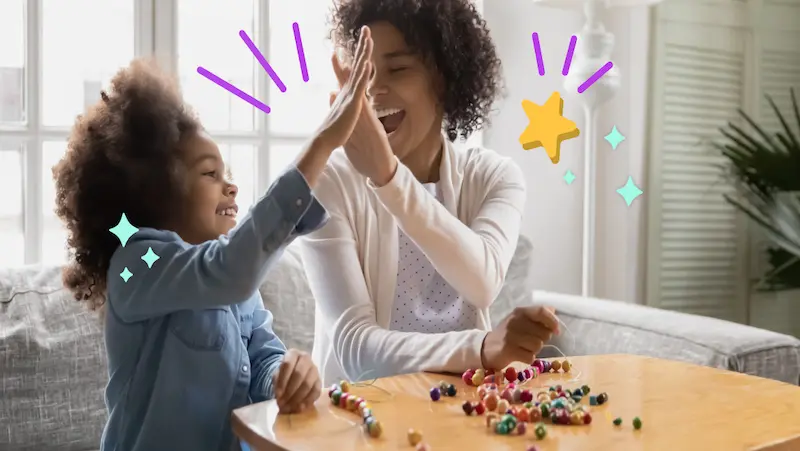
Acknowledging and Reinforcing Positive Conflict Resolution Efforts:
Conflict is a natural part of life, and children, like adults, encounter disagreements and challenges in their daily interactions. Teaching children how to handle conflicts in a constructive manner is crucial for their emotional and social development. When children make efforts to resolve conflicts peacefully and respectfully, it is important to acknowledge and reinforce their positive behavior.
Promoting positive thinking for kids reinforces their efforts in conflict resolution by encouraging them to focus on finding constructive solutions, fostering empathy, and maintaining an optimistic outlook, ultimately leading to healthier and more harmonious relationships with others.
Here’s why:
Encourages empathy and understanding: Recognizing a child’s efforts to resolve conflicts reinforces the value of empathy and understanding. By acknowledging their attempts to see different perspectives and find common ground, we teach them the importance of considering others’ feelings and needs.
Builds self-confidence: When children receive praise and validation for their conflict resolution skills for kids, it boosts their self-confidence. They become more willing to approach conflicts with a positive mindset and the belief that they have the ability to find solutions.
Reinforces positive behavior: Celebrating successful conflict resolution efforts reinforces the idea that peaceful negotiation and compromise are the preferred methods of resolving conflicts. This encourages children to adopt these strategies in future conflicts, creating a more harmonious and cooperative environment.
Ideas for acknowledging positive conflict resolution efforts:
Verbal praise and encouragement: Recognize and acknowledge the child’s efforts with specific feedback on their approach, communication skills, and willingness to find solutions.
Certificates or awards: Consider creating a “Conflict Resolution Champion” certificate or award that highlights their achievements in this area.
Sharing success stories: Share success stories of conflict resolution with other children or parents, creating a positive influence and inspiration for others.
Celebrating Milestones and Growth in Children’s Abilities:
Children grow and develop at their own pace, achieving significant milestones and acquiring new skills along the way. Celebrating these achievements not only acknowledges their progress but also motivates them to continue learning and exploring. Here’s why celebrating milestones and growth is crucial:
Boosts self-esteem: Celebrating milestones and growth in children’s abilities enhances their self-esteem and sense of accomplishment. It shows them that their efforts are recognized and valued, encouraging them to set higher goals and work towards achieving them.
Encourages a growth mindset: When children are celebrated for their achievements, they develop a growth mindset, understanding that their abilities can improve with effort and dedication. This mindset fosters resilience, determination, and a willingness to take on new challenges.
Strengthens the parent-child or teacher-student bond: Celebrating milestones and growth is an opportunity to strengthen the bond between children and their caregivers or educators. By actively participating in their celebrations, we convey our support, pride, and commitment to their development.
Ideas for celebrating milestones and growth:
Family or classroom celebrations: Organize small gatherings where parents, siblings, or peers can join in celebrating the child’s accomplishments.
Creative displays: Create visual displays showcasing the child’s achievements, such as a growth chart or a wall of accomplishments, to serve as a reminder of their progress.
Special treats or rewards: Offer small rewards or treats as a way of celebrating and reinforcing the child’s efforts.
Conclusion
In conclusion, it is crucial for parents to continue supporting their children’s development in various areas. One area that deserves particular attention is nurturing their child’s talents and interests. By providing encouragement and support, parents can play a significant role in helping their children reach their full potential.
Children possess unique talents and passions that should be acknowledged and nurtured. Parents should actively listen to their children, observe their interests, and engage in open conversations to understand their aspirations better. By doing so, parents can identify areas in which their children show potential and offer the necessary guidance and resources to support their development.
In conclusion, parents have a crucial role in supporting their children’s development in areas that align with their talents and interests. By providing encouragement, guidance, and a nurturing environment, parents can empower their children to explore their passions, develop their skills, and reach their full potential. The ongoing support and belief in their children’s abilities will undoubtedly contribute to their growth and success in the long run. Learn about money management for kids also.
Exploring the diverse educational offerings on BrightChamps opens up exciting opportunities for children to learn and thrive in a supportive and dynamic online environment.
To explore future career development opportunities, visit BrightChamps blog page and learn more about various industry trends and insightful tips for personal growth.
Frequently Asked Questions
A1. Teaching conflict resolution skills to children benefits them by promoting peaceful relationships, fostering empathy, improving communication, and enhancing problem-solving abilities.
A2. Parents can start teaching conflict resolution skills to their kids as early as preschool age, around 3 to 4 years old.
A3. Effective strategies for teaching conflict resolution skills to kids include modeling positive behavior, teaching active listening, encouraging problem-solving discussions, and promoting compromise and negotiation.
A4. Parents can help children differentiate between healthy and unhealthy conflict by teaching them to recognize respectful communication, cooperation, and resolution while identifying signs of aggression or manipulation.
A5. Active listening plays a crucial role in teaching conflict resolution skills to kids as it helps them understand others’ perspectives, promotes empathy, and encourages effective communication.
A6. Parents can encourage empathy and understanding in their children during conflicts by teaching them to see things from others’ viewpoints, promoting open dialogue, and fostering a culture of respect and kindness.
A7. Common mistakes parents make when teaching conflict resolution skills to kids include not addressing conflicts promptly, not modeling positive behavior, and imposing solutions rather than guiding children to find their own resolutions.
A8. Parents can help their children handle conflicts with peers by teaching them assertiveness, providing guidance on problem-solving, and encouraging open communication with teachers or mediators when necessary.
A9. There are several recommended resources for parents to learn more about teaching conflict resolution skills for kids, such as books like “The Conflict Resolution Toolbox for Educators” by Gary S. Marx and “How to Talk So Kids Will Listen & Listen So Kids Will Talk” by Adele Faber and Elaine Mazlish.
A10. Practical activities and games that reinforce conflict resolution skills at home include role-playing scenarios, using problem-solving worksheets, engaging in collaborative art projects, and playing cooperative board games.



 We are an army of educators and passionate learners from BrightChamps family, committed to providing free learning resources to kids, parents & students.
We are an army of educators and passionate learners from BrightChamps family, committed to providing free learning resources to kids, parents & students.














